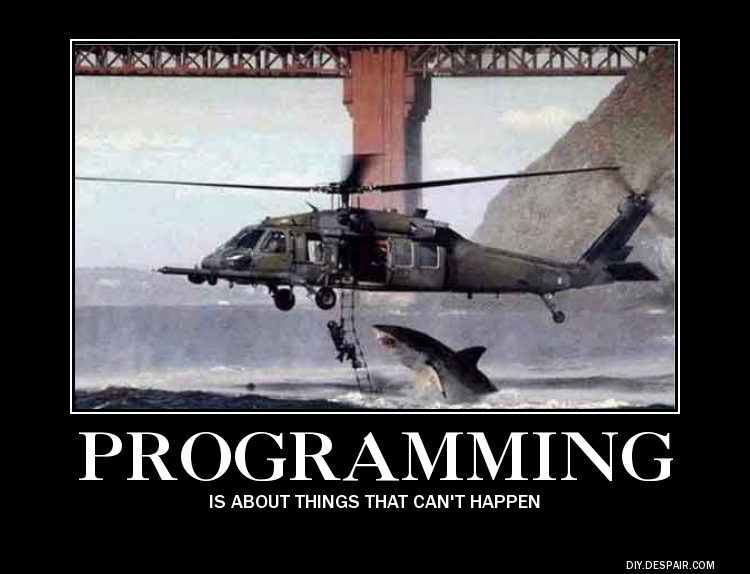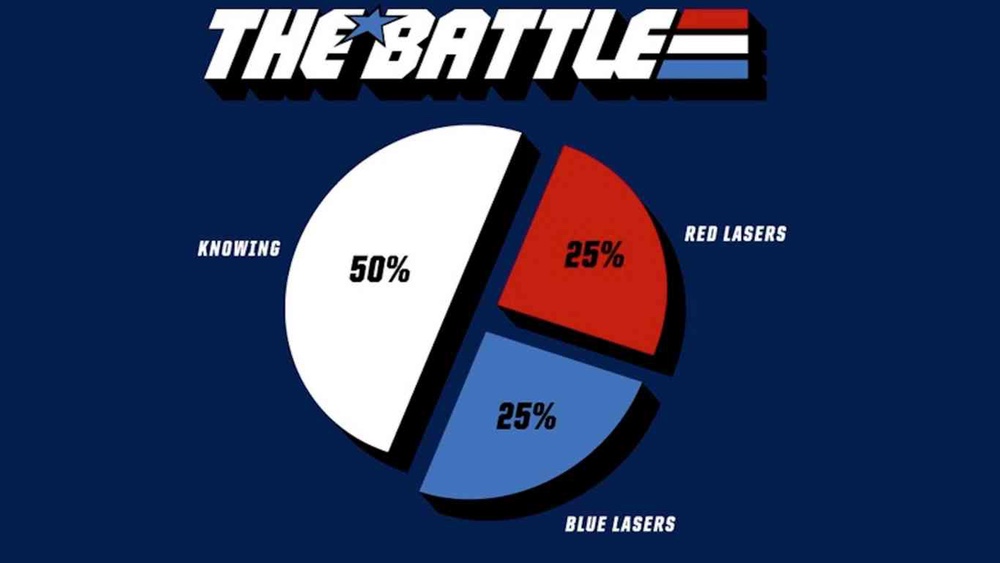Stop Returning Null
I hate checking for null.
Null checks make code worse, not better. They’re like fire ants - they show up everywhere, and once you start seeing them, they’re basically impossible to fully remove.
The good news is that you can write C# code that doesn’t check for null and is still safe from null reference errors. It just takes discipline, a little extra code, and the will to make it happen.
Fair warning: banishing null checks from your code involves design patterns. Get your astronaut hat ready.
The Revenge of the Void
Failing to check for null is often seen as a beginner’s mistake, probably because beginners often make it.
public class Account {
public int Id { get; set;}
public string Name { get; set;}
}
public class AccountRepository {
public IEnumerable<Account> GetByIds(IEnumerable<int> ids) {
// lots of database code
}
}
var ids = new int[] { 1, 2, 3 };
var accounts = (new AccountRepository()).GetByIds(ids);
for (var account in accounts)
Console.WriteLine(account.Name);See that code? All of my code used to look like that. It’s simple, easy to understand, and the intention of the code is obvious. It has all of the characteristics of good code - but in reality, it’s a time bomb waiting to explode.
The good news is that you’re a developer, and the odds are never in your favor, so when (not if) this bomb explodes, it’s probably going to do it in production.
Enjoy that.
Novice developers often argue that they don’t have to check for null, because reaching the null value execution path “can’t happen”. Say that enough and your boss will eventually make you a poster like this:

(I know because that poster is mine.)
Eventually, you learn your lesson. The fear of a null reference in production drives you into a very specific and finely-tuned brand of paranoia. Your code starts to look like this:
var ids = new int[] { 1, 2, 3 };
var accounts = (new AccountRepository()).GetByIds(ids);
if (accounts == null)
return;
for (var account in accounts) {
if (account == null)
continue;
Console.WriteLine(account.Name);
}…and so on.
Here’s the thing about putting null checks everywhere in your code: it feels like you’re writing good code, but you’re not. You’re not.
Null checks are viral. They start in one area of the code and eventually leech into all of it. All that extra code has a cost. Eventually you will introduce a bug into code intended to prevent bugs.
I can tell you from experience, recognizing the irony of that fact will not make the feeling of incompetence you’ll have any easier to tolerate.
What’s worse - all these null checks aren’t addressing the real problem. They’re just treating a symptom, and that symptom is the fact that you’re returning null from things.
Let’s explore some ways to avoid that.
Suddenly, a Shortage of Nothing
There are three categories of values you’ll need to watch out for:
- Value types, like
Int32orDecimal String, which is technically a value type but still can potentially be null- Reference types, like
Objectand its many descendants
Value types are easy - they always contain a value and so are safe from null references.
String can be null. Here’s how you avoid null references when returning Strings: don’t return null. Return String.Empty instead. .Empty as a constant representation of a non-existent value is important, so keep it in mind. We’ll wander back to it later.
Reference types can all be null, and it’s mostly on their behalf that we’re here.
It’s worth mentioning that there’s one class of reference type for which there’s an easy way to avoid returning null values: Enumerable<T>. The .NET framework provides Enumerable.Empty, which returns an empty list, neatly avoiding the null problem.
An Introduction to the Null Object Pattern
The Null Object Pattern is, at its heart, about defining a type that represents nothing. This sounds more complicated than it is, so let’s take a look at some code:
public class Account {
public int Id { get; set;}
public string Name { get; set;}
}
public class EmptyAccount : Account {
public Account() {
Id = 0;
Name = String.Empty;
}
}That’s it. That’s the whole pattern. EmptyAccount has two characteristics: it defines reasonable (i.e., non-null) defaults for all of its properties, and, critically, it responds to the same API as its parent class, Account.
I like to name my null types Empty to match String.Empty and Enumerable.Empty, but you can call yours anything you want. Because EmptyAccount extends Account, it’ll work in any code that returns or consumes an Account.
With EmptyAccount in place, we’re back to our original code:
var ids = new int[] { 1, 2, 3 };
var accounts = (new AccountRepository()).GetByIds(ids);
for (var account in accounts)
Console.WriteLine(account.Name);Note the beautiful absence of null checks. Speaking of absence…
Evidence of Absence
There will eventually come a time when you need to know that a nothing, rather than a something, was returned, and you won’t have the crutch of null to rely upon.
The easiest way to identify an empty value is to examine the type of your variable with the C# keyword is:
var acct = new AccountRepository.Get(id);
if (acct is EmptyAccount) {
//...
}This approach has an advantage over a standard null check - it makes your intentions clear. You can encounter a null value for a lot of reasons. Checking for EmptyAccount is a check for a specific kind of nothing.
Of course, nothing in programming is free. Comparisons against a type are (slightly) slower than normal object comparisons, so let’s explore another approach that uses a simple comparison check.
A comparison requires an instance of an EmptyAccount:
//let's assume that there's no id "-1"
var account = (new AccountRepository()).GetById(-1);
var empty = new EmptyAccount();
return account == empty; //trueYou might notice that since the constructor sets default values for all of EmptyAccount’s properties, every instance will be the same. If that’s the case, there’s no reason to ever have more than once instance of EmptyAccount in memory. One way to do that is to implement the singleton pattern for EmptyAccount:
public class EmptyAccount : Account {
private static EmptyAccount _instance = null;
private static readonly object _lock = new object();
private EmptyAccount() {
//...
}
public static EmptyAccount Empty {
get {
lock (_lock) {
if (_instance == null) {
_instance = new EmptyAccount();
}
return _instance;
}
}
}
//...
}Now you can compare against the single instance of EmptyAccount:
//let's assume that there's no id "-1"
var account = (new AccountRepository()).GetById(-1);
return account == EmptyAccount.Empty; //trueTo be consistent with other “empty” representations in .NET, you can also expose the singleton as a property on Account itself:
public class Account {
public static Account Empty {
get {
return EmptyAccount.Empty;
}
}
//...
}Once this structure is established, returning an EmptyAccount is as easy as returning Account.Empty. As a bonus, you can now handle an empty value without having to interact directly with EmptyAccount, hiding the details of its implementation from consumers of Account:
//let's assume that there's no id "-1"
var account = (new AccountRepository()).GetById(-1);
return acct == Account.Empty; // trueThe default equality implementation in C# for Object is a reference comparison. Since there’s only one instance of EmptyAccount, comparing two references to Account.Empty will always evaluate to true.
There is one potential problem lurking here - if the parent type overrides .Equals, comparisons to your empty singleton can become unreliable.
public class Account {
//...
public override bool Equals(Object obj) {
return this.Name == ((Account)obj).Name;
// let's agree to ignore the potental NRE here
}
public Account() {
Name = String.Empty;
}
}
return (new Account() == Account.Empty); // true!It’s probably best to avoid the singleton approach if you’re working in an environment that routinely overrides equality for your types. You should probably also try to avoid environments that override equality, but that’s just one man’s opinion.
You might be thinking at this point that you can just override the equality comparison on your null type, perhaps by forcing a reference check:
public class EmptyAccount {
//...
public override bool Equals(Object obj) {
return Object.ReferenceEquals(this, obj);
}
}This solution might seem good on the surface, but in practice it will introduce subtle, hard-to-reproduce bugs into your code, since the order of the arguments in an equality comparison suddenly matter:
var acct = new Account();
var hmm = acct.Equals(Account.Empty); // true
var uh_oh = Account.Empty.Equals(acct); // falseSeriously, don’t do this. Down this path lies madness.
Let’s All Stop Returning Null Together
Now you know how to avoid returning null, and, of course, knowing is half the battle.

(The other half is lasers.)
What you do now is up to you, but remember this: every avoided NRE makes the world a better place.
You want to make the world a better place, right?
This post was inspired by Nothing is Something, a talk by the great Sandi Metz. Thank you to Sam Julien, Jared Pinchot, and Kris Vitt for reviewing the content, and to Malena Summers for reviewing the style and tone.
